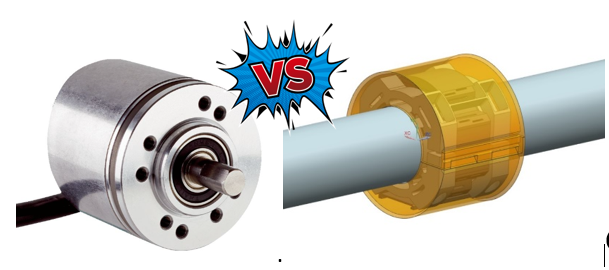
Measuring speed or angular displacement: Easy-peasy or a real challenge?
If you ask me, measuring speed and angular displacement in the context of dynamic analysis is one of the most challenging aspects in sensing. Encoders with fixed amounts of pulses/revolutions are the bread and butter of angular measurements.
Standard sampling will not do the trick because it differs from counting pulses. Using standard sampling, you risk missing certain pulses. Furthermore it is uncertain when exactly the pulse has occurred, leading to a poor approximation of the angular displacement with respect to time. Differentiating this signal to obtain a speed reading will lead to a very inaccurate signal as both the angular displacement as the timing are inaccurate.
When the pulses are counted using edge detection, the result will significantly improve, but the fact remains that the resolution is still quite limited and differentiation of the data to obtain the speed is still quite inaccurate. Increasing the resolution improves the result but also drastically pushes up the cost of the encoder acquisition hardware.
Forcebit measures rotation based on analog sensor data and hence our sensor does not suffer as much from the limited resolution as classical encoders. Don’t hesitate to reach out if you want to learn more!
